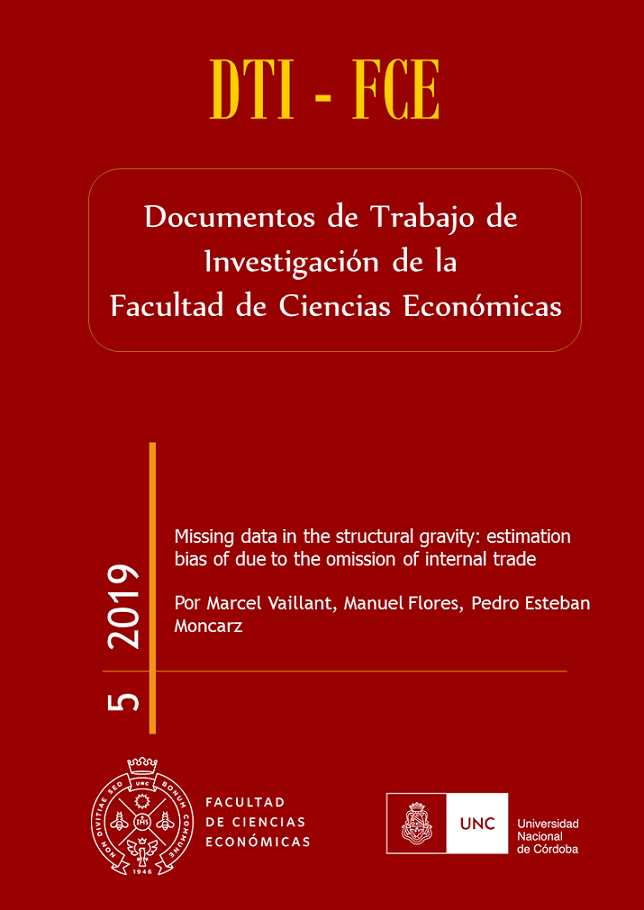Missing data in the structural gravity: estimation bias of due to the omission of internal trade
Palabras clave:
Structural gravity, Zero trade, Missing dataResumen
In the last decade, there has been an intense development in trade models aiming to explain the determinants of bilateral trade. A seminal theoretical and methodological contribution is Anderson and van Wincoop (2003), who introduced the concept of multilateral resistance and structural gravity. However, there is still an important gap between the theoretical developments of the structural gravity model and its empirical applications. The main two issues are: the presence of zeros in bilateral trade and the missing data problem of own production oriented to the own market. The presence of zero trade has been considered in Santos Silva and Tenreyro (2006) and Helpman, Melitz and Rubinstein (2008), but the effects of the lack of internal transactions in the estimation of the gravity model has not been much studied, even when its relevance can be thought to be of greater importance, because the great heterogeneity across countries in terms of their degrees of openness. The objective of the paper is, with state of the art tools, analyze and characterize the consequence of the omission of internal transactions in the estimation of trade proximities (trade costs) and on the values of multilateral resistances, which in turn will affect the comparative static effects derived from different trade policy measures.
Descargas
Archivos adicionales
Publicado
Número
Sección
Licencia
Derechos de autor 2019 Documentos de Trabajo de Investigación de la Facultad de Ciencias Económicas (DTI-FCE)

Esta obra está bajo una licencia internacional Creative Commons Atribución-NoComercial-SinDerivadas 4.0.






